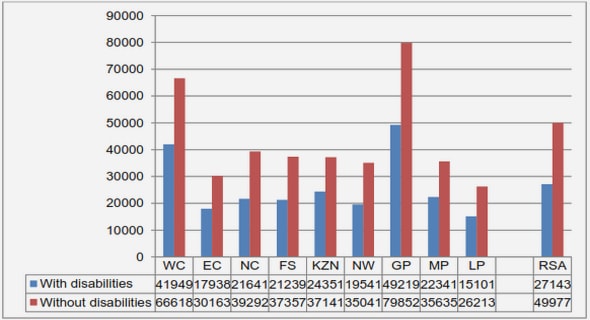(Downloads - 0)
For more info about our services contact : help@bestpfe.com
Table of contents
Chapter 1. Introduction-Barriers around geologic nuclear waste repositories
1.1. Geological nuclear waste disposal
1.2. Multi-barrier systems
1.3. Sorption behavior of radionuclides in potential barriers
1.3.1. On iron phases existing in canisters and steel reinforcements
1.3.2. On hydrated cement phases existing in backfills and tunnels
1.3.3. On clays
1.3.4. On granitic minerals
1.4. Objectives of the thesis
Chapter 2. Evidence of multiple sorption modes in AFm phases using Mo as structural probe
2.1. Introduction
2.2. Materials and methods
2.2.1. Materials and Chemicals.
2.2.2. Adsorption Experiments.
2.2.3. Aqueous Data Modelling.
2.2.4. In-situ X-ray Diffraction.
2.2.5. Solid Phase Characterization.
2.3. Results and discussion
2.3.1. Wet Chemistry Experiments.
2.3.2. In-situ Time Resolved X-ray Diffraction.
2.3.3. Local Geometry of Adsorbed Molybdate.
2.3.4. Mo Distribution in Reacted LDHs Particles.
2.3.5. Complexation environment around adsorbed Mo.
2.3.6. Estimation of edge sites density.
2.3.7. Environmental implications.
Supporting Information
Chapter 3. Selenite uptake by AFm phases: a description of intercalated anion coordination geometries
3.1. Introduction
3.2. Materials and methods
3.2.1. Materials and chemicals.
3.2.2. Adsorption experiments.
3.2.3 Aqueous data modelling.
3.2.4 In-situ time-resolved XRD.
3.2.5 Solid phase characterization.
3.3. Results and discussion
3.3.1 Batch sorption isotherm.
3.3.2. In-situ time resolved XRD.
3.3.3. Sorbed Se coordination.
3.3.4. Sulfur K-edge EXAFS results.
3.3.5. Linear relationship between basal spacing and hydrated anions’ radii.
3.3.6. Structural stability of AFm-SeO3.
3.3.7. Environmental Implications.
Supporting Information
Chapter 4. Determination of redox potentials imposed by steel corrosion products in cement-based media
4.1. Introduction
4.2. Materials and methods
4.2.1. Materials and chemicals.
4.2.2. Synthesis and characterization of Fe-bearing phases.
4.2.3. Batch sorption experiments.
4.2.4. XANES spectroscopy.
4.2.5. PDF spectroscopy.
4.3. Results and discussion
4.3.1. Aqueous phase results.
4.3.2. Surface Se and Sb species.
4.3.3. Surface U and Mo species.
4.3.4. PDF analysis of reacted NZVI.
4.3.5. “In-situ” experimental Eh values.
4.3.6. Environmental implications.
Supporting Information
Chapter 5. RNs (i.e., U, Se, Mo, and Sb) sorption behavior on hydrated Fe-bearing CEM-V/A cement
5.1. Introduction
5.2. Materials and methods
5.2.1. Materials and chemicals.
5.2.2. Preparation of powder samples of hydrated Fe-bearing cement products.
5.2.3. Synthesis of each separated CEM-V/A cement hydration product.
5.2.4. Kinetics experiments.
5.2.5. Batch sorption experiments.
5.2.6. Preparation of RNs-containing Fe0-bearing cement cores.
5.2.7. Polishing of RNs-containing cement cores and Micro-probe analysis.
5.2.8. Sulfur K-edge, Selenium K-edge, and Molybdenum K-edge XANES-EXAFS spectroscopy
5.2.9. PDF analysis.
5.3. Results and discussion
5.3.1. XRD characterization and dissolution kinetics of Fe-bearing hydrated cement.
5.3.2. U(VI) sorption on hydrated CEM-V/A cement particles.
5.3.3. Se(IV) sorption on hydrated CEM-V/A cement particles.
5.3.4. Mo(VI) sorption on hydrated CEM-V/A cement particles.
5.3.5. Sb(V) sorption on hydrated CEM-V/A cement particles.
5.3.6. Microprobe mapping on Fe0/cement interface in presence of RNs
5.4. Conclusions
Chapter 6. The influence of surface impurities on the reactivity of pyrite toward aqueous U(VI)
6.1. Introduction
6.2. Materials and methods
6.2.1 Materials
6.2.2 Batch sorption experiments
6.2.3 Spectroscopic and Microscopic Analyses
6.3. Results and discussion
6.3.1 Pyrite Characterization
6.3.2 Aqueous phase analysis for Type I pyrite suspension
6.3.3 Aqueous phase analysis for Type II pyrite suspension
6.3.4. XPS Surface features
6.3.5. XAS Characterization on uranium speciation
6.3.6. SEM surface morphology
6.3.7. Influencing factors on pyrite reactivity.
6.4. Conclusions
General conclusions
Retention of MoO42- on AFm phases.
SeO32- uptake by CaAl LDH.
Determination of Eh values imposed by steel corrosion products in cement-based media.
RNs sorption behaviors on hydrated Fe-bearing CEM-V/A cement.
The influence of surface impurities on the reactivity of pyrite toward aqueous U(VI).
Perspectives
Dissolution of spent nuclear fuel (UO2) in silica-rich fluids.
Uranium(VI) colloidal nanoparticles in cement leachate.
Sorption behaviors of RN oxyanions on LDHs’ surface.
Intercalated anion’s size vs. LDHs’ basal spacing.
Sorption competition of RNs on corrosion products of reinforced Fe0.
Synchrotron-based X-ray analysis of Fe0-reinforced cement cores.
U(VI) retention on synthetic trace elements doped pyrite.
Thermodynamic predictions of secondary phases in cementitious repositories.
References




